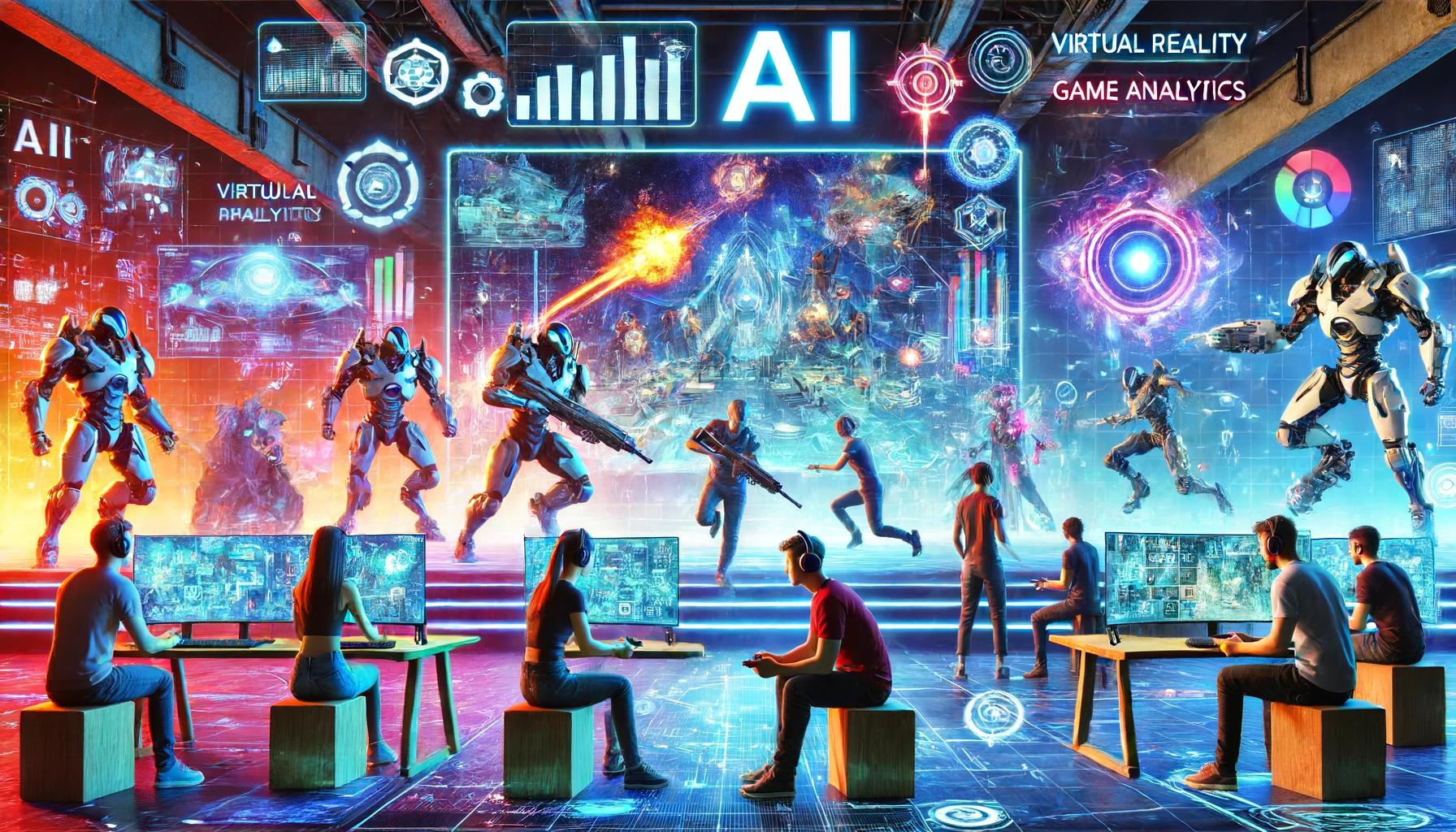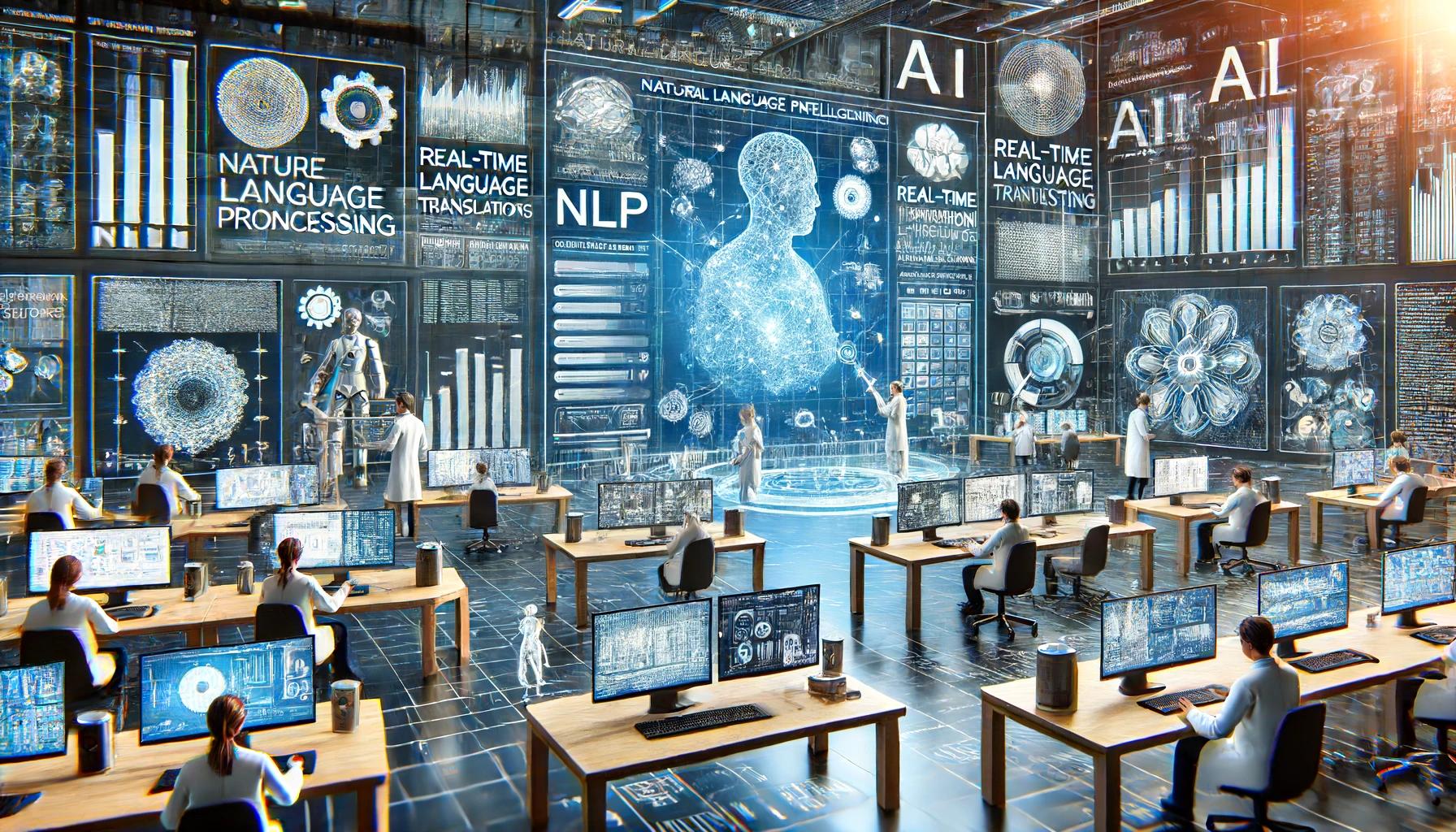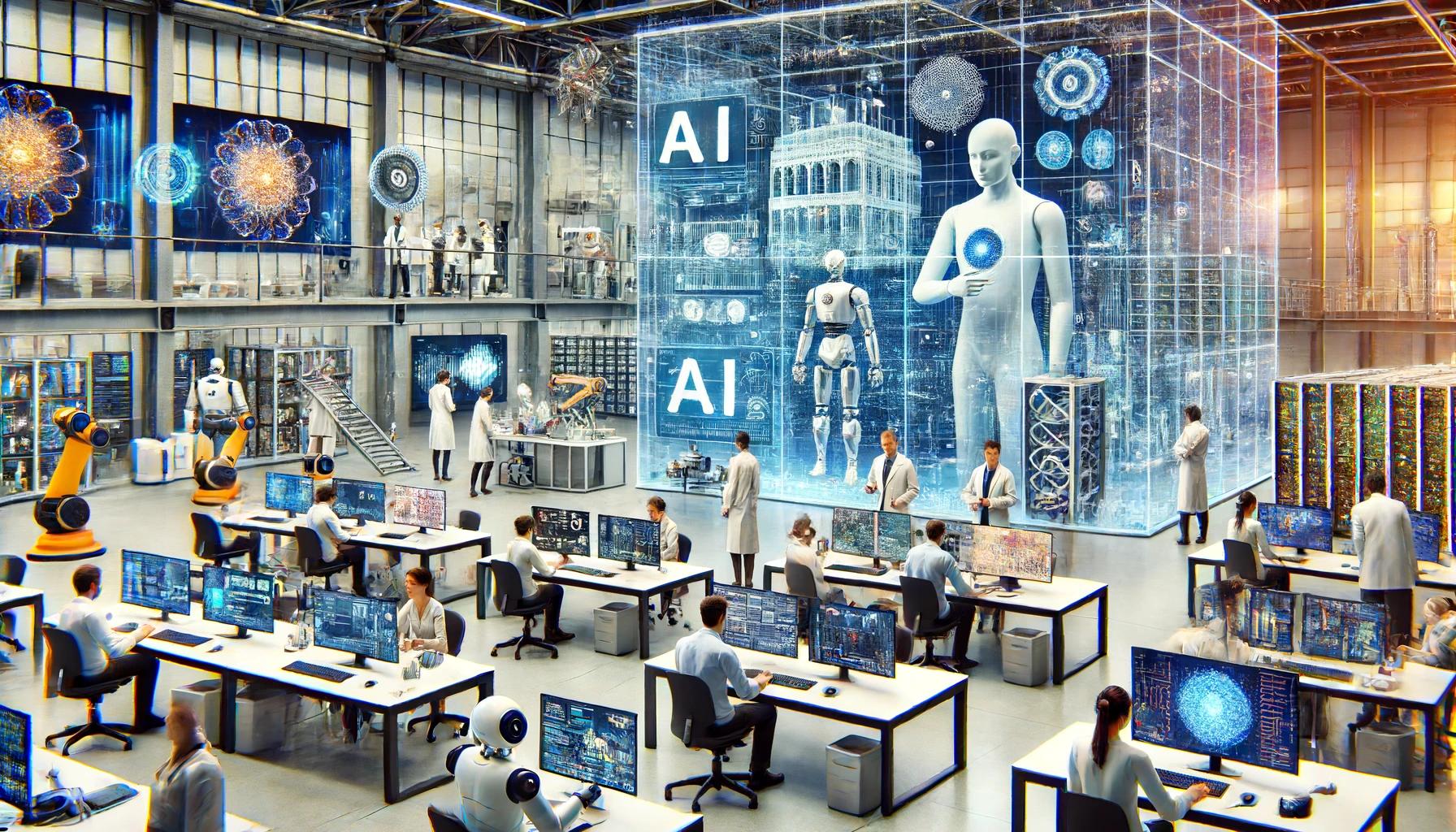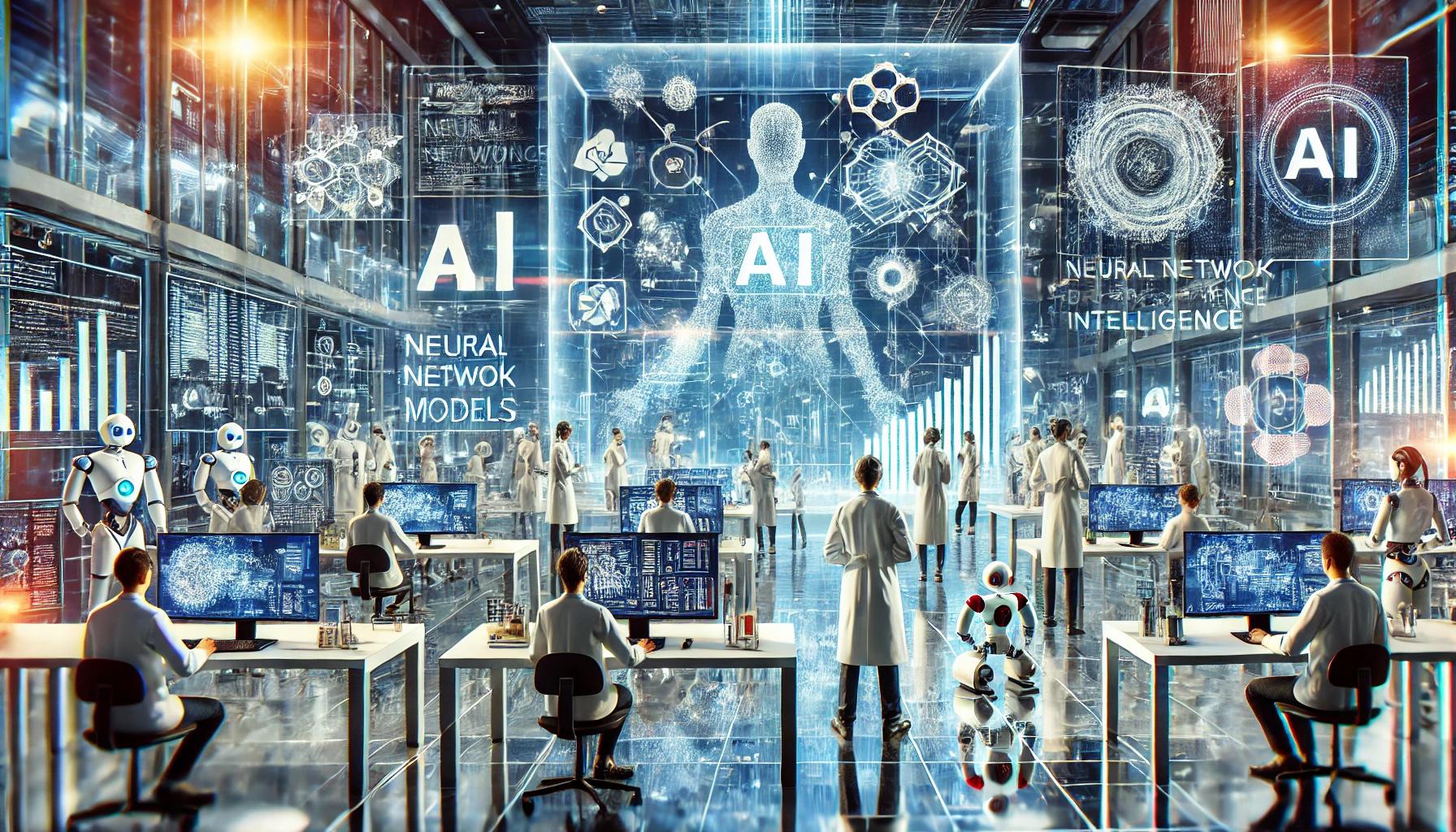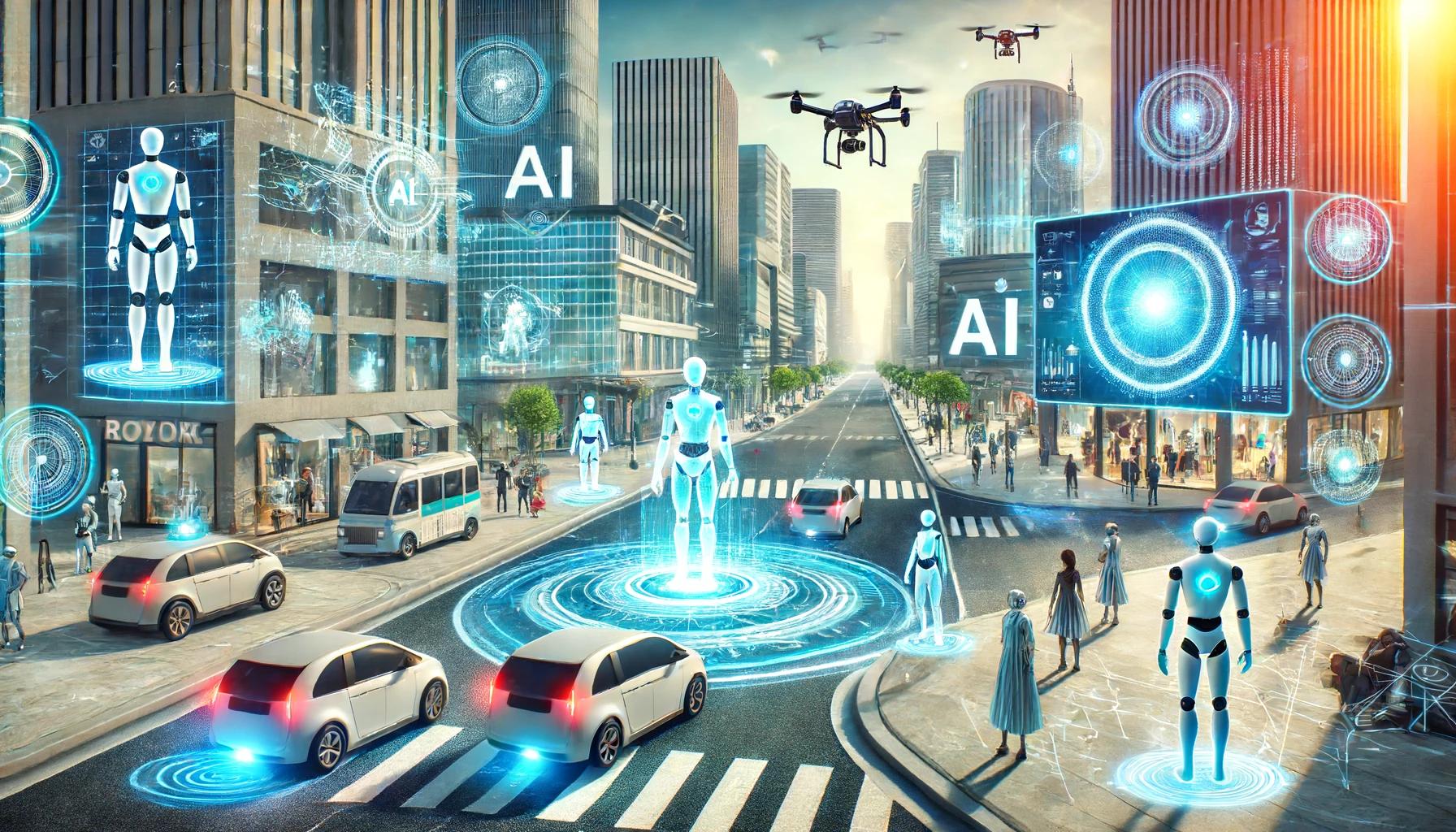- Brief Overview of the Evolution of Gaming
- Introduction to AI in Gaming
- Importance and Relevance of AI in Modern Gaming
- Historical Context
- Early Use of AI in Gaming
- Milestones in AI Gaming Development
- Evolution from Simple Algorithms to Complex Systems
- Types of AI in Gaming
- Non-Player Character (NPC) Behavior
- Procedural Content Generation
- AI-Driven Storytelling
- Player Experience Personalization
- Game Testing and Quality Assurance
- Impact on Game Design
- Enhancing Realism and Immersion
- Creating Dynamic and Adaptive Gameplay
- Balancing Difficulty and Accessibility
- Generating Endless Content and Replayability
- Player Interaction and Experience
- AI Companions and Opponents
- Personalized Gaming Experiences Based on Player Behavior
- Adaptive Learning Curves and Difficulty Settings
- Emotional AI and Creating Deeper Connections with Characters
- Technical Aspects and Innovations
- Machine Learning and Neural Networks in Gaming
- Real-Time AI Processing and Optimization
- Tools and Platforms for AI Game Development
- Case Studies of Successful AI Implementations in Popular Games
- Challenges and Ethical Considerations
- Ensuring Fair Play and Avoiding AI Exploitation
- Addressing Concerns About AI Biases
- Balancing AI Control with Player Agency
- Data Privacy and Security in AI-Driven Games
- Future Prospects
- Emerging Trends in AI Gaming
- Predictions for the Future of AI in Gaming
- Potential Impact on the Gaming Industry and Player Communities
Brief Overview of the Evolution of Gaming
The evolution of gaming is a journey that spans several decades, from the simplistic pixelated screens of the 1970s to the immersive, high-definition experiences we enjoy today. The journey began with arcade classics like “Pong” and “Space Invaders,” which captivated audiences with their straightforward yet addictive gameplay. The advent of home consoles in the 1980s, such as the Nintendo Entertainment System (NES), brought gaming into households worldwide, leading to the creation of iconic franchises like “Super Mario” and “The Legend of Zelda.”
The 1990s saw the rise of 3D gaming with titles like “Doom” and “Super Mario 64,” pushing the boundaries of what was possible in virtual environments. The new millennium introduced online multiplayer gaming, revolutionizing player interaction through games like “World of Warcraft” and “Halo 2.” Today, gaming is a multi-billion dollar industry that encompasses mobile, PC, and console platforms, featuring incredibly detailed graphics, complex narratives, and expansive open worlds.
Introduction to AI in Gaming
Artificial Intelligence (AI) in gaming has evolved from rudimentary, rule-based algorithms to sophisticated systems capable of learning and adapting to player behavior. Early examples of AI in games include the predictable enemy patterns in “Pac-Man” and the basic decision trees used in strategy games like “Chessmaster.” As technology advanced, so did the complexity of AI, enabling more lifelike and unpredictable behaviors.
Modern AI in gaming encompasses a wide range of applications, from creating realistic non-player characters (NPCs) that can interact and respond to player actions, to generating vast and varied game worlds through procedural content generation. AI-driven systems are now integral to enhancing gameplay, making games more immersive and challenging. For more information on the role of AI in gaming, see this comprehensive article here.
Importance and Relevance of AI in Modern Gaming
AI has become a cornerstone of modern gaming, significantly impacting how games are designed, developed, and experienced by players. One of the primary roles of AI is to create dynamic and responsive environments that adjust to the player’s actions, providing a more personalized and engaging experience. For instance, AI can be used to adjust the difficulty level in real-time, ensuring that players are consistently challenged without becoming frustrated.
Furthermore, AI is essential in procedural content generation, enabling developers to create expansive and varied game worlds without manually designing every detail. This not only saves time and resources but also ensures that each player’s experience is unique. AI also plays a crucial role in game testing and quality assurance, identifying bugs and optimizing performance more efficiently than human testers.
The relevance of AI in gaming extends beyond entertainment, influencing fields such as education, training, and simulation. By harnessing AI, games can provide valuable learning experiences and realistic simulations for various professional fields.
Historical Context
Early Use of AI in Gaming
The early use of AI in gaming can be traced back to classic games that featured basic enemy behavior and decision-making algorithms. One of the first examples is the iconic game “Space Invaders,” released in 1978. In this game, the enemies followed a predetermined pattern, moving left and right across the screen and gradually descending towards the player. This simple AI created a sense of urgency and challenge that captivated players.
Another notable example is “Pac-Man,” released in 1980, where each ghost had its own unique behavior pattern, creating a more dynamic and engaging gameplay experience. The ghosts’ AI was programmed to chase, ambush, and evade Pac-Man, providing a rudimentary but effective form of artificial intelligence that significantly increased the game’s complexity and replay value.
Milestones in AI Gaming Development
As technology advanced, so did the sophistication of AI in gaming. One of the key milestones was the release of “Chessmaster” in 1986, which featured an advanced AI capable of playing chess at various skill levels. The game’s AI used decision trees and heuristics to evaluate possible moves and strategies, providing a challenging opponent for players of all skill levels.
In the 1990s, AI in gaming took a significant leap forward with the release of games like “Doom” (1993) and “Quake” (1996). These games introduced more advanced enemy AI, capable of navigating 3D environments, using cover, and coordinating attacks. This era also saw the emergence of strategy games like “StarCraft” (1998), where AI opponents could manage resources, build armies, and execute complex strategies.
Evolution from Simple Algorithms to Complex Systems
The evolution from simple algorithms to complex AI systems has been driven by advancements in computational power and AI research. In early games, AI was often limited to scripted behaviors and basic decision-making processes. However, modern AI in gaming leverages machine learning, neural networks, and procedural generation to create more sophisticated and adaptive systems.
For example, “The Sims” (2000) introduced AI-driven characters with unique personalities and autonomous behavior, allowing for emergent gameplay experiences. More recent games like “Middle-earth: Shadow of Mordor” (2014) feature the Nemesis System, where enemy characters remember past encounters with the player and adapt their behavior accordingly, creating a dynamic and personalized gaming experience.
Types of AI in Gaming
Non-Player Character (NPC) Behavior
Non-Player Characters (NPCs) are a fundamental aspect of many games, providing players with interaction and challenges. AI-driven NPC behavior has evolved significantly from the predictable movements in early games to highly sophisticated systems. Modern NPCs can navigate complex environments, make decisions based on player actions, and exhibit lifelike behaviors. For example, in “The Elder Scrolls V: Skyrim,” NPCs follow daily routines, react to the player’s presence, and interact with each other in ways that enhance the game’s realism and immersion.
Procedural Content Generation
Procedural content generation (PCG) uses algorithms to create game content dynamically, reducing the need for manual design and allowing for unique, endless experiences. This technique is used to generate levels, landscapes, and even entire game worlds. A notable example is “Minecraft,” where the world is procedurally generated, ensuring that no two playthroughs are the same. PCG can also be seen in games like “No Man’s Sky,” where an entire universe of planets, each with its own ecosystem, is generated procedurally.
AI-Driven Storytelling
AI-driven storytelling enables games to adapt their narratives based on player choices and actions, creating personalized and dynamic story experiences. Games like “Mass Effect” and “The Witcher 3: Wild Hunt” feature branching storylines that change depending on the player’s decisions, providing a sense of agency and immersion. AI algorithms analyze player behavior and adjust the narrative accordingly, ensuring that each playthrough offers a unique story experience.
Player Experience Personalization
Personalizing the player experience involves tailoring gameplay to individual player preferences and behaviors. AI systems can analyze data from player interactions to adjust difficulty levels, suggest in-game content, and create a more engaging experience. For instance, in “Left 4 Dead,” the AI Director adjusts the game’s intensity based on the player’s performance, ensuring a balanced and thrilling experience. This type of AI can also recommend in-game items, missions, or even other games that the player might enjoy, enhancing overall satisfaction.
Game Testing and Quality Assurance
AI plays a crucial role in game testing and quality assurance by automating the detection of bugs, glitches, and performance issues. AI-driven testing tools can simulate millions of gameplay scenarios, identify edge cases, and ensure that the game runs smoothly across different platforms. For example, AI tools like Gamebench and MABL use machine learning to perform extensive testing, reducing the time and resources required for manual testing. This allows developers to focus on refining game mechanics and content, ensuring a polished final product.
Impact on Game Design
Enhancing Realism and Immersion
AI significantly enhances realism and immersion in games by creating lifelike characters, environments, and interactions. Advanced AI algorithms enable NPCs to exhibit realistic behaviors, such as reacting to the player’s actions, following complex routines, and displaying emotions. For instance, in “Red Dead Redemption 2,” NPCs interact with the player and their environment in ways that mimic real-world behavior, contributing to a more immersive experience. AI also powers environmental interactions, such as dynamic weather systems and realistic physics, further grounding players in the game world.
Creating Dynamic and Adaptive Gameplay
One of the most impactful uses of AI in game design is the creation of dynamic and adaptive gameplay. AI systems can monitor and respond to player actions in real time, adjusting the game environment, NPC behavior, and difficulty levels to maintain engagement and challenge. For example, in “Left 4 Dead,” the AI Director adapts the game’s intensity based on the player’s performance, ensuring a balanced and exciting experience. This adaptability keeps gameplay fresh and challenging, encouraging players to stay engaged for longer periods.
Balancing Difficulty and Accessibility
Balancing difficulty and accessibility is a crucial aspect of game design, and AI plays a pivotal role in achieving this balance. AI systems can dynamically adjust the difficulty level based on the player’s skill and progress, ensuring that the game remains challenging yet fair. In “Celeste,” for instance, an Assist Mode allows players to modify game parameters to suit their skill level, making the game more accessible without compromising the core experience. AI can also provide personalized hints, tutorials, and adaptive learning curves, helping players of all skill levels enjoy the game.
Generating Endless Content and Replayability
Procedural content generation (PCG) powered by AI allows for the creation of vast, diverse, and unique game worlds, significantly enhancing replayability. By using algorithms to generate levels, environments, and even storylines, developers can offer players a fresh experience every time they play. “Minecraft” is a prime example, where the game world is procedurally generated, offering virtually infinite exploration and creativity opportunities. Similarly, “Rogue Legacy” uses PCG to create new dungeon layouts for each playthrough, ensuring that no two runs are the same.
The ability of AI to generate endless content not only extends the lifespan of a game but also provides players with a sense of discovery and excitement with each new session. This capacity for endless variety and replayability has become a hallmark of many modern games, making them more appealing and enduring for players.
Player Interaction and Experience
AI Companions and Opponents
AI companions and opponents play a crucial role in shaping the player’s experience in many games. AI companions can assist players in combat, provide guidance, or contribute to the story, making the gameplay more engaging and immersive. For example, in “The Last of Us,” the AI companion Ellie assists the player by distracting enemies, finding supplies, and participating in combat, enhancing the overall narrative and gameplay experience. On the other hand, AI opponents are designed to challenge players, adapting to their strategies and providing a competitive and dynamic environment. In “Halo,” the AI-controlled enemies use tactics such as flanking and retreating to create a challenging and realistic combat experience.
Personalized Gaming Experiences Based on Player Behavior
AI enables the creation of personalized gaming experiences by analyzing player behavior and tailoring the game accordingly. This personalization can manifest in various forms, such as recommending specific quests, adjusting in-game rewards, or modifying the storyline. For instance, in “The Witcher 3: Wild Hunt,” the game’s narrative and world change based on the player’s choices and actions, providing a unique experience for each playthrough. AI systems can track player preferences and habits to offer suggestions and adapt content to match their play style, enhancing engagement and satisfaction.
Adaptive Learning Curves and Difficulty Settings
Adaptive learning curves and difficulty settings powered by AI ensure that games remain challenging and enjoyable for players of all skill levels. AI can dynamically adjust the game’s difficulty based on the player’s performance, providing a balanced and tailored experience. In “Resident Evil 4,” the adaptive difficulty system changes the number and strength of enemies based on how well the player is doing, maintaining an optimal level of challenge. Additionally, games like “Celeste” offer customizable difficulty settings that allow players to adjust various aspects of the game, ensuring accessibility while preserving the core challenge.
Emotional AI and Creating Deeper Connections with Characters
Emotional AI aims to create deeper connections between players and in-game characters by simulating realistic emotions and responses. This technology allows characters to react dynamically to the player’s actions and the game environment, fostering a sense of empathy and attachment. In “Detroit: Become Human,” characters’ emotions and relationships evolve based on the player’s choices, resulting in a deeply personalized narrative experience. Emotional AI can also be used to create more believable and relatable NPCs, enhancing the overall immersion and emotional impact of the game.
By leveraging AI to create complex and adaptive interactions, developers can craft richer, more engaging experiences that resonate with players on a deeper level, ensuring that each journey through the game world feels unique and meaningful.
Technical Aspects and Innovations
Machine Learning and Neural Networks in Gaming
Machine learning and neural networks have revolutionized AI in gaming by enabling systems to learn from data and improve over time. These technologies allow for the creation of more complex and adaptive AI behaviors. Machine learning algorithms can analyze vast amounts of player data to identify patterns and make predictions, which can be used to enhance gameplay mechanics, improve NPC behavior, and personalize player experiences.
For example, in the game “OpenAI Five,” AI bots trained using deep reinforcement learning to play the complex strategy game “Dota 2” at a competitive level. The AI learned from millions of game simulations, allowing it to develop sophisticated strategies and teamwork capabilities that rivaled human players.
Real-Time AI Processing and Optimization
Real-time AI processing and optimization are critical for creating responsive and engaging gaming experiences. Modern AI systems need to process vast amounts of data and make decisions in real-time to adapt to the player’s actions and the game environment. This requires efficient algorithms and powerful hardware capable of handling complex computations quickly.
Techniques such as parallel processing and cloud computing are often employed to meet these demands. For example, in “Forza Horizon 4,” AI opponents use cloud-based data to mimic the driving styles of real players, providing a more realistic and challenging racing experience. Real-time optimization ensures that the game remains fluid and responsive, maintaining high performance even in dynamic and resource-intensive scenarios.
Tools and Platforms for AI Game Development
A variety of tools and platforms are available to game developers for incorporating AI into their projects. These tools streamline the development process, providing pre-built AI modules, frameworks, and libraries that can be customized to fit specific game requirements.
One popular platform is Unity, which offers comprehensive AI development tools, including machine learning agents and behavior trees. Another widely used tool is Unreal Engine, which provides robust AI frameworks and plugins for creating complex NPC behaviors and adaptive game environments. Additionally, platforms like TensorFlow and PyTorch offer powerful machine learning capabilities that can be integrated into game development pipelines.
Case Studies of Successful AI Implementations in Popular Games
Several popular games have successfully implemented advanced AI systems, demonstrating the transformative potential of AI in gaming.
- “The Last of Us Part II“: The game features highly sophisticated AI for both enemies and allies. Enemies use realistic tactics such as flanking and communication to create a challenging combat experience, while ally AI provides meaningful support and interaction, enhancing the narrative and emotional impact.
- “Middle-earth: Shadow of Mordor“: The Nemesis System is a groundbreaking AI innovation that allows enemy characters to remember past encounters with the player, developing unique traits and relationships. This dynamic system creates a personalized and evolving gameplay experience that is different for each player.
- “FIFA” Series: The AI in FIFA games has evolved to simulate realistic soccer strategies and player behaviors. Machine learning algorithms analyze real-world player data to create lifelike movements and decision-making, providing an authentic and competitive sports simulation.
Challenges and Ethical Considerations
Ensuring Fair Play and Avoiding AI Exploitation
One of the primary challenges in integrating AI into video games is ensuring fair play and preventing AI exploitation. Game AI must be designed to provide a balanced and enjoyable experience for all players. If AI systems are too predictable or can be easily exploited, it can diminish the overall gaming experience. Developers must constantly test and refine AI behaviors to ensure they provide a fair challenge without being overly difficult or easy to manipulate. This involves rigorous testing and ongoing updates to address any discovered exploits or imbalances.
Addressing Concerns About AI Biases
AI biases in video games can lead to unintended consequences, such as unfair advantages or disadvantages for certain players. Generative AI, which is used to create game content, can inadvertently reflect biases present in the training data. This can result in NPCs or game scenarios that unfairly target or favor specific player groups. To address these concerns, developers need to carefully curate training data and implement checks to identify and mitigate biases in game AI. Transparency in AI algorithms and continuous monitoring are essential to ensure that video games provide an inclusive and fair experience for all players.
Balancing AI Control with Player Agency
Balancing AI control with player agency is a crucial consideration in game design. While advanced game AI can create dynamic and adaptive experiences, it is essential to ensure that players still feel in control of their actions and decisions. Over-reliance on AI can lead to a sense of helplessness or frustration if players perceive that their choices have little impact on the game. Developers must strike a balance by providing AI-driven assistance and challenges while maintaining player autonomy. This can be achieved by offering customizable AI settings, allowing players to adjust the level of AI intervention according to their preferences.
Data Privacy and Security in AI-Driven Games
AI-driven games often rely on collecting and analyzing player data to personalize experiences and improve game AI. However, this raises significant concerns about data privacy and security. Players may be wary of how their data is used and whether it is adequately protected. Developers must implement robust data protection measures, including encryption and secure data storage, to safeguard player information. Additionally, transparent data usage policies and obtaining explicit consent from players are essential to building trust and ensuring compliance with data privacy regulations.
Future Prospects
Emerging Trends in AI Gaming
AI in gaming continues to evolve, with several emerging trends poised to shape the future of the industry:
- Generative AI for Content Creation: Generative AI is increasingly being used to create game assets, such as environments, characters, and even music. This technology can significantly reduce development time and costs while providing endless content variety. AI-driven tools like GANs (Generative Adversarial Networks) are being explored for creating highly realistic and diverse game elements.
- AI-Enhanced Player Interaction: Advanced AI systems are being developed to improve player interaction, enabling more natural and intuitive communication with NPCs. Voice recognition and natural language processing (NLP) allow players to converse with game characters in a more immersive and realistic manner. Games like “Cyberpunk 2077” are pushing the boundaries of AI-driven dialogue systems.
- AI in Game Development: AI is increasingly being integrated into the game development process itself, from procedural generation of levels to automated testing and debugging. Tools like Unity’s ML-Agents enable developers to create AI that learns and adapts during development, streamlining the creation of complex game behaviors.
- Personalized Gaming Experiences: AI is being used to create highly personalized gaming experiences by analyzing player behavior and preferences. This trend is likely to continue, with more games offering tailored content, difficulty levels, and storylines based on individual player data.
Predictions for the Future of AI in Gaming
The future of AI in gaming is likely to be characterized by even greater integration and sophistication:
- More Realistic NPCs: As AI technology advances, NPCs will become increasingly lifelike, capable of understanding and reacting to a wide range of player actions and emotions. This will lead to deeper and more meaningful interactions within game worlds.
- Fully Adaptive Games: Future games may adapt in real-time to players’ skills, preferences, and emotional states, providing a continuously evolving and personalized experience. This could include dynamic storylines that change based on player decisions and actions, creating unique narratives for each playthrough.
- Enhanced Multiplayer Experiences: AI will play a crucial role in enhancing multiplayer experiences by managing game balance, moderating player behavior, and facilitating matchmaking. AI-driven analytics can help create fairer and more enjoyable multiplayer environments.
- Integration of AI with VR and AR: The combination of AI with virtual reality (VR) and augmented reality (AR) will lead to highly immersive gaming experiences. AI can be used to create realistic virtual environments and intelligent virtual characters that interact seamlessly with players in VR and AR settings.
Potential Impact on the Gaming Industry and Player Communities
The continued integration of AI into gaming is expected to have significant impacts on both the industry and player communities:
- Innovation in Game Design: AI will drive innovation in game design, allowing developers to create more complex, immersive, and dynamic games. This will lead to new genres and gameplay mechanics that were previously unimaginable.
- Increased Accessibility: AI can help make games more accessible to a wider audience by providing adaptive difficulty settings, personalized assistance, and inclusive design features. This will ensure that more players can enjoy gaming, regardless of their skill level or physical abilities.
- Enhanced Player Engagement: Personalized and adaptive gaming experiences will lead to higher levels of player engagement and satisfaction. Games that can continuously evolve and offer fresh content will keep players coming back for more.
- Ethical and Privacy Considerations: As AI becomes more prevalent in gaming, there will be increased scrutiny on ethical and privacy issues. Developers will need to address concerns related to data privacy, AI biases, and the potential for AI-driven content to manipulate player behavior.
- Economic Impact: The use of AI in gaming can reduce development costs and time, leading to more efficient production cycles. This can result in a greater variety of high-quality games being available to consumers, potentially driving further growth in the gaming market.
